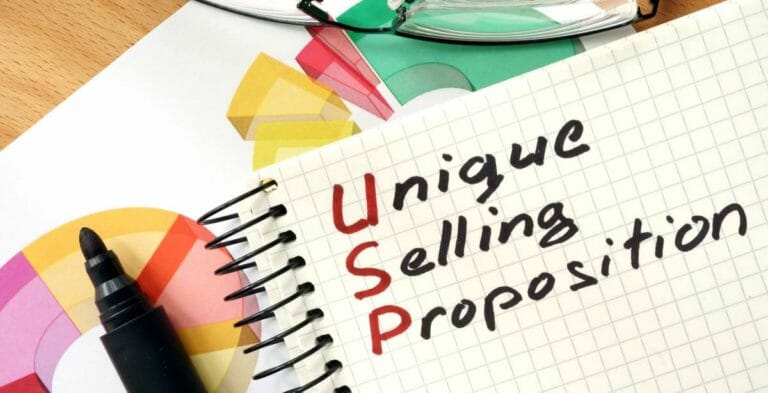Featured
Posted by Ian Brodie on December 19th, 2010.
Ian Brodie on December 19th, 2010.

Of all the things I teach about marketing and business development, the thing most people are interested in is “how do you get so many clients via your website?”
And it's a good question to ask. The web is a fantastic equalizer – allowing small businesses like you and me to match and beat our big competitors.
We may not be able to match their marketing dollars. We may not be able to send legions of foot soldiers out networking. We can't afford the fancy agency graphics and presentations. But if we know what we're doing – we can use the web to make just as much an impact on our potential clients as they can. Sometimes even more so.
In my case, I get somewhere over 70% of my clients from my website (ie – that's how they initially found me, and that's what triggered them to contact me). And my site is ranked higher for traffic than some of the top 50 consulting firms globally.
It's not because I'm some internet genius (far from it – I've made a ton of mistakes). But I have learnt a few simple lessons on what it takes to get clients via the web. And most importantly – I've put those lessons into practice.
Which, of course, begs the question – what are those lessons Ian?
Well, first up, I have a clear picture of who my potential clients are.
Most people have an idea of who their target clients are – but they haven't really got under their skin. They don't really understand them. They maybe did an exercise at a workshop for 20 minutes once, and that's it. Or they “just know”.
But the truth is that unless you really put work into it, you don't know. Not enough.
I spend literally hours thinking about my ideal target clients. Trying to get inside their head. To understand what their biggest needs and concerns are. What messages will resonate with them and what will turn them off. I try to infuse what I write on my site or the videos I do with that knowledge. I try to create useful resources to help them with what they're really worried about.
My hope is that they'll feel like I really understand them and am on their side (in fact my hope is not just that they'll feel like that – but that I really do understand them and I really am on their side).
I don't always get it right by any stretch of the imagination. But I do get it right often enough, and with enough people that I've been able to build a “following” of sorts.
I've also learned what people who need my services actually search for on the web.
I've learned that there are two primary sort of searches. People who have a problem or opportunity I can help with usually start out searching for useful information they can use to help them. Then eventually, they may come to search for people they can hire or services they can buy.
It would be nice if everyone came looking for help. But in reality, the vast majority of searches are for information. Where most consulting and coaching websites go wrong is that they try to sell to people. They talk about how brilliant the consultant is, what fantastic benefits the services will deliver, and how great everyone says they are.
That's great stuff – and you need those pages for the much smaller number of people who come looking for someone to help. But if you want to be really successful on the web you need to have content to attract and engage with the far greater number of people who are in the earlier stage of looking for valuable information.
Catch them early with blog posts, articles, videos and other resources which establish you as an authority in your field and you're positioning yourself to be the person they turn to when they decide they need help.
To do this you need to continually research what people are looking for on the web in your field – and to be able to distinguish between the searches that lead to winning business and those that don't.
Of course, if you want to get those searchers to your site, you need to know how to get traffic.
There are lots of different ways to get traffic to your website – from paying for it through pay-per-click and banner advertising, to getting to the top of google's search results, through to getting traffic from other related websites or social media.
All of these strategies take work. From on-site optimisation and link building to get traffic from google, to writing compelling pay-per-click ads and landing pages, to forming alliances for guest blogging and article syndication.
Your best bet is to master one or two strategies. I get most of my traffic from search engines – but also know how to boost it via social media and guest blogging. Getting traffic is the “grind” of succeeding online. It almost always requires a lot of work – though once you know what you're doing, much of it can be outsourced quite cheaply.
But I've also learned that getting people to your website is not enough.
It's great to get lots of visitors and to be at the top of the google search results for lots of keyword phrases. But since most visitors won't be ready to buy when they first visit my site, I need some way of connecting with them so that I can keep in touch and initiate more direct communication.
If you want to succeed online you can't rely on clients remembering to come back to your website.
 Some people use social networks: Linkedin, Facebook or Twitter as a way of interacting more directly with potential clients.
Some people use social networks: Linkedin, Facebook or Twitter as a way of interacting more directly with potential clients.
Personally, I use good old email.
Potential clients who sign up for my free video training course get a weekly “Insider Strategies” email from me with useful articles and tips on how to get more clients. It ensures I stay top of mind without them having to remember to come back to my site.
I've found it's vital to create the right impression with your website.
Your website needs to get across to potential clients who you are and what you'd be like to work with. I still see consultants websites these days with no About page, or just a generic description of the company. These days people want to know more about who they'll be dealing with. We like to see behind the scenes and get suspicious of businesses who don't “open their kimono” and share more information about who they are.
And these days, your website must look professional too. It doesn't have to be too slick with all sorts of clever graphics and animation. My site here is fairly simple in design.
But it must look professional. Clients make judgements about your professionalism based on what they see of your site. If it's ugly, difficult to use, and has errors on it (or even spelling mistakes) – they'll assume you won't be professional in your work with them.
Finally – and most importantly of all – I've learned you must take control of your website in your own hands.
That doesn't mean you have to do it all yourself (although these days it's pretty simple to do so).
But it does mean you have to understand it.
If you're hiring people to develop your website for you and to optimize it to get traffic, you must be able to know if they're doing a good job.
I've heard horror stories of consultants recently shelling out 5 figure sums for basic websites that have done nothing to help their bottom line.
You can't let that happen to you. You must understand the basic principles of succeeding online to make sure that whoever you hire is doing the right things to help you get clients.

 Some people use social networks: Linkedin, Facebook or Twitter as a way of interacting more directly with potential clients.
Some people use social networks: Linkedin, Facebook or Twitter as a way of interacting more directly with potential clients. In my experience, the people who succeed at business development are not necessarily the ones who are the best at it. They're the ones who are the busiest at it.
In my experience, the people who succeed at business development are not necessarily the ones who are the best at it. They're the ones who are the busiest at it.

 We talk a lot about differentiation in marketing. Differentiation is something that sets us apart. Unique attributes of our services that are valued by our clients but that can't be easily reproduced by our competitors.
We talk a lot about differentiation in marketing. Differentiation is something that sets us apart. Unique attributes of our services that are valued by our clients but that can't be easily reproduced by our competitors.